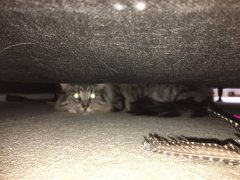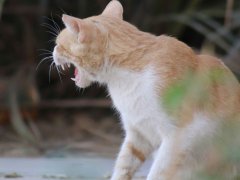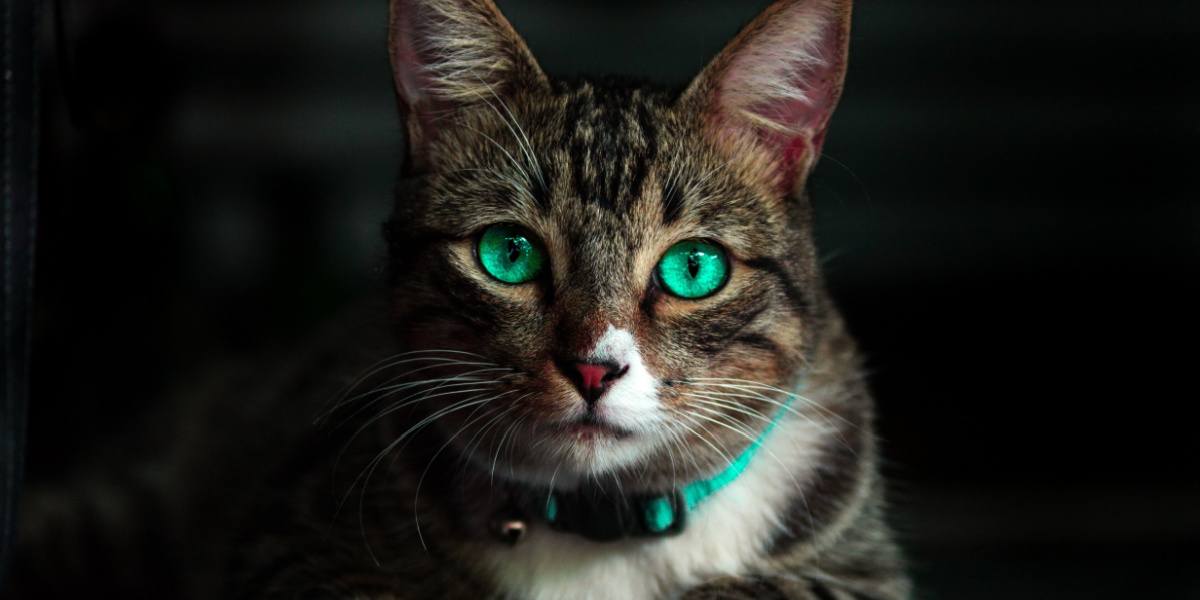
If you’ve ever woken at night and found a pair of glowing eyes watching you, chances are you’re a cat owner. Cats are mysterious creatures and have long been linked with the supernatural, but at least some of their quirks can be explained away by science.
Key Takeaways
Cats are predators that mostly hunt in dim light levels at dawn and dusk, and are well adapted physiologically for this.
One way that cats hone their night vision is via the tapetum lucidum, a reflective layer of tissue at the back of the eye that increases light absorption.
This reflective layer is what causes eyeshine: the glow is caused by the reflected light exiting the eye.
So, why do cats’ eyes glow in the dark? It’s all about a reflective layer of tissue called the tapetum lucidum, and it helps cats see in dim light when they’re on the prowl. Read on to find out why cats’ eyes glow in the dark.
Also Read: The 7 Types Of Eye Color In Cats
How Do Cats’ Eyes Glow When It’s Dark?
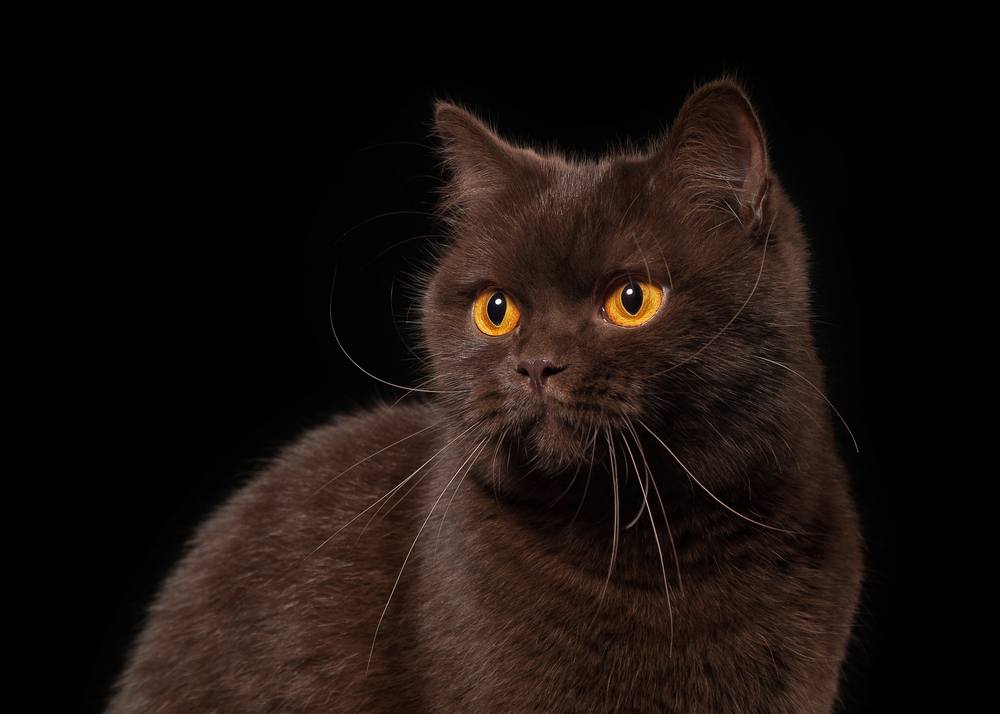
A cat’s tapetum lucidum—a structure in the eye that helps cats see well in low light—causes their eyes to glow in the dark.
Cats, alongside many other domestic species, possess a layer of tissue at the back of the eye called the tapetum lucidum—Latin for “shining layer.” It is a reflective surface, found behind the retina, right at the back of the eyeball.
Its role is to act like a mirror: light bounces off it, back to the cat’s retina, giving the photoreceptor cells located there a second chance to absorb the light. However, not all of this reflected light is absorbed, and some light passes straight back out of the eye, through the retina, causing the “eyeshine” glow.
The color of the glow depends on what the tapetum layer is made from. In cats, it’s made from a mixture of riboflavin and zinc molecules, with the levels of zinc affecting the color of the reflected glow. Most cats’ eyes glow green, but the spectrum includes blues and yellows. The cat’s eye color also has a role in what the eyeshine looks like: albinos and cats with blue eyes produce a red-eye effect.
Many other animals possess this tapetum lucidum, including dogs, fish, sheep, and cows. Others, such as primates and pigs, do not. The presence of this reflective layer is thought to be related to the need for vision in low light levels. Diurnal animals’ eyes are much less likely to have this feature.
Also Read: Cat Vision Vs. Human Vision: Who Has Better Vision?
Why Do Cats Need A Tapetum Lucidum?
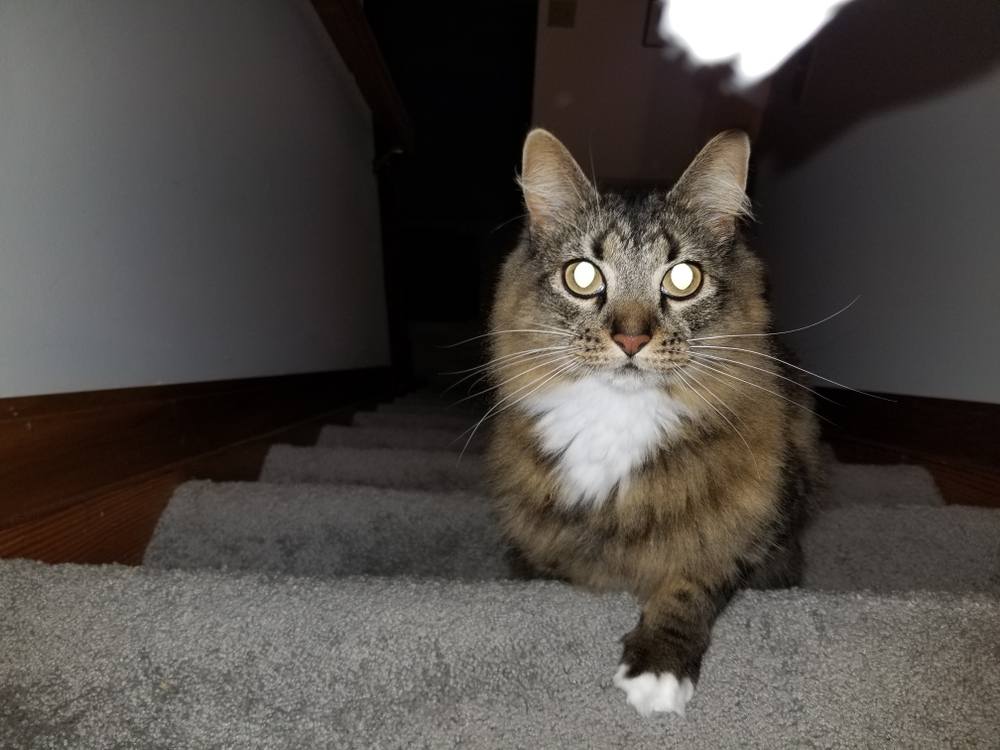
Cats need to be able to see in very little light because they hunt at dawn and dusk, times of low light.
Cat vision is different from ours, mainly due to our varying uses of this important sense. Humans are diurnal: active in the daytime and safely tucked up asleep at night.
Cats, however, are crepuscular: active at dawn and dusk, when the light conditions tend to be poor. They are active and skilled hunters, and their prey are often small, nocturnal animals, active at times when visible light is low. Cats have developed multiple adaptations to suit this role, including much better night vision than us.
In fact, cats have been shown to detect light levels that are six times lower than we mere humans can. This is partially due to that clever tapetum layer that human eyes don’t possess. Cats also have large pupils and corneas, meaning more light can enter the eye and hit those vital photoreceptor cells that send messages flying up the optic nerve.
The third reason that cats see well in a low amount of light is to do with their photoreceptor cells. There are two types of these specialized cells: rods and cones. Cones are necessary for vision in higher light levels, and in color perception.
Rods are primarily concerned with lower light and peripheral vision. Cats have a concentration of rod cells that is about five times higher than humans, explaining their excellent vision in dim light and their sensitivity to motion perception.
Cats have another trick up their sleeve—they can use their ocular muscles to control how much light enters the eye. If light levels are high, they can narrow their pupils into slits, and then dilate them when they need more light to find their way. You might have seen your cat’s pupils dilate when they’re playing and about to pounce on a toy. This is a useful hunting skill.
Also Read: Heterochromia In Cats: Cats With Different Colored Eyes
Can Cats Still See In The Daytime?
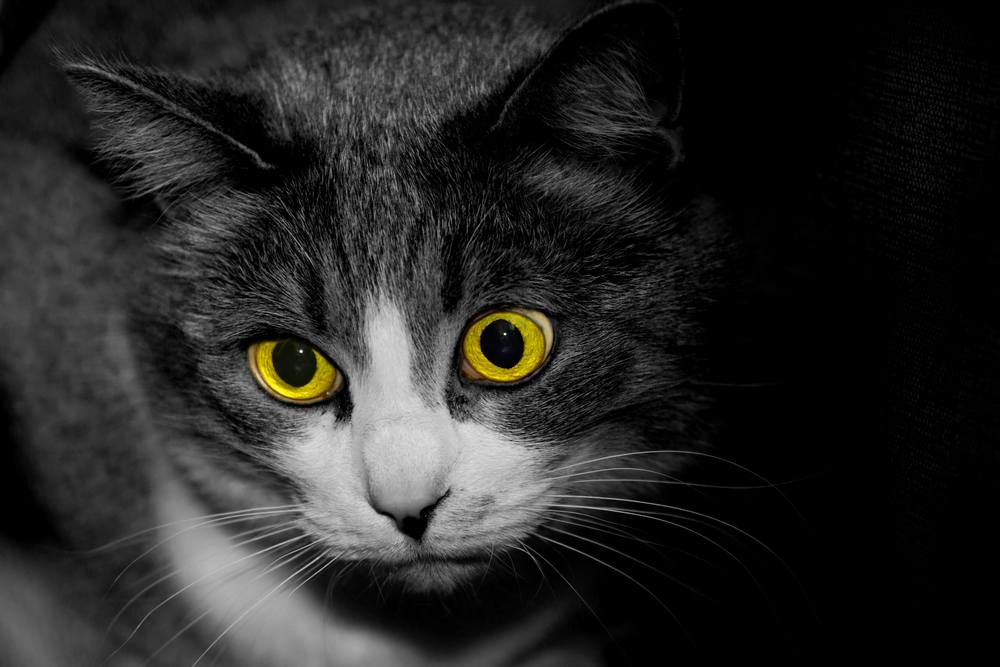
Cats can dilate their pupils to let in more light or narrow them to slits when the light is very bright.
Cats are well adapted to see well in dim light, but they can still navigate in the daytime. Their handy tapetum lucidum is not so helpful in bright light though, as the reflective light may make images blurry, like having too many mirrors around.
Cats have good peripheral vision and the ability to track motion, but their visual acuity is poor—they are probably only able to see around 20 feet away. Their lower concentration of cone cells also means their color vision is much more muted than ours.
Also Read: Cat Anatomy Guide
Do All Cats’ Eyes Shine In The Dark?
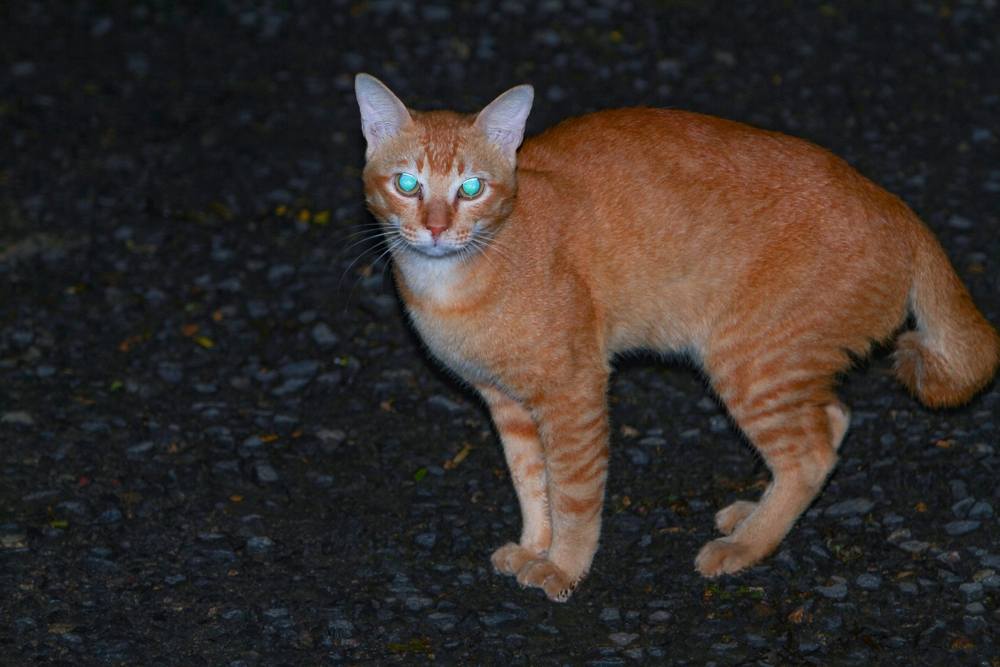
Some cats’ eye shine brighter than others, and they can glow in different colors.
All feline species have a tapetum lucidum, the reflective layer that causes the mysterious glowing eyes look. The intensity of the shine can vary, with some cat breeds, such as Siamese cats, having reportedly less eyeshine than others.
If your cat’s eyes don’t glow at all, they may have a problem with their eyesight. Vitamin deficiencies, cataracts, glaucoma, tumors, and high blood pressure can all impact vision and cause damage to the tapetum layer or block it from view. However, don’t panic: eyeshine can be tricky to spot if the conditions aren’t right, as the light needs to shine in at the right angle for the glow to be seen.
If you’re worried about your cat’s eyesight, have noticed that their eyes no longer glow, or have spotted other symptoms such as weepy eyes, redness, soreness, or your cat rubbing at their eyes, take them to see a veterinarian.
Also Read: Can Cats See In The Dark?
Cats’ Eyes Glow In The Dark: Final Thoughts
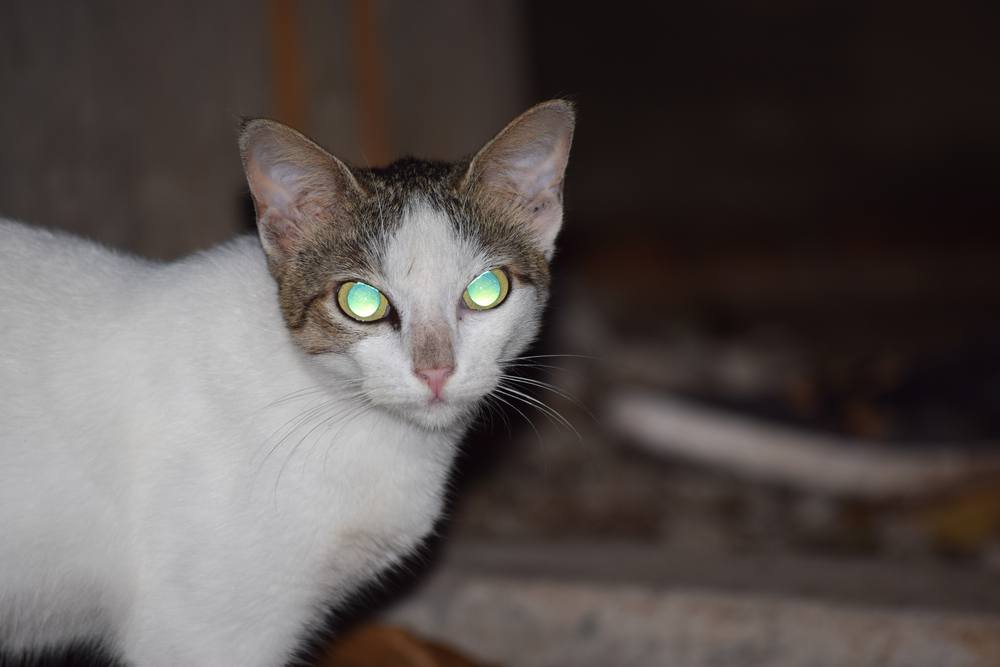
A cat’s eyeshine might seem spooky or supernatural, but it’s all part of the cat’s unique eye structure.
Cats are stealthy hunters, prowling silently and gracefully around their territories in the dim light of dusk and dawn. This habit requires excellent night vision, and cats have adapted for optimal sight in low light levels.
The tapetum lucidum is a reflective layer at the back of the eye that catches scattered light and reflects it back to the retina for a second attempt at absorption. Some of this mirrored light exits the eyes and causes eyeshine: the spooky glow-in-the-dark effect that cats’ eyes can give. It might seem supernatural, but it’s actually just perfect evolution at work!
Also Read: Why Is My Cat Staring At Me? Top 5 Reasons Explained
Frequently Asked Questions
What does it mean when a cat’s eyes glow?
Cats have a reflective layer (tapetum lucidum) at the back of the eye that mirrors light forward. This helps them absorb more light, increasing their night vision, but it also produces the eyeshine glow effect which can look slightly spooky!
Can cats see in total darkness?
Cats do need some light in order to see, but they have excellent night vision and can see in much lower light levels than humans. Cats can detect light six times dimmer than the lowest detectable level of light that a person can see.
Why do cats’ eyes turn green at night?
Cats have a reflective layer called a tapetum lucidum at the back of the eye. This reflects light and helps them see in very dim light. The color it reflects forward at us depends on the cat’s eye color and certain pigments in the tapetum layer, and often appears green, even in cats that don’t have green eyes.

